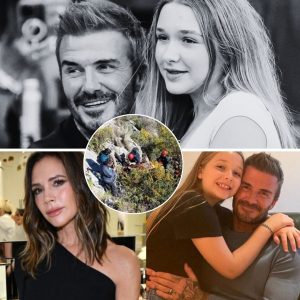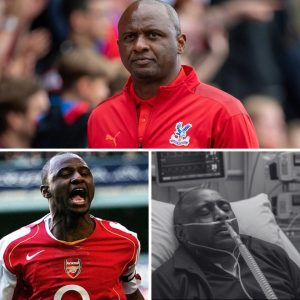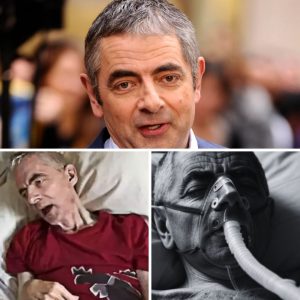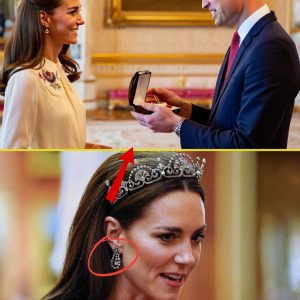WASHINGTON — President Trump said Monday that he was “very happy” with progress toward ending Europe’s deadliest war in 80 years after meeting with Ukrainian President Volodymyr Zelensky and other European leaders at the White House.
“Everyone is very happy about the possibility of PEACE for Russia/Ukraine,” Trump wrote on social media around 6 p.m. after nearly six hours of talks — following his Alaska summit with Russian President Vladimir Putin on Friday.
“At the conclusion of the meetings, I called President Putin, and began the arrangements for a meeting, at a location to be determined, between President Putin and President Zelenskyy. After that meeting takes place, we will have a Trilat, which would be the two Presidents, plus myself.”
Follow The Post’s live coverage of President Trump’s meeting with Zelensky
Trump added: “Again, this was a very good, early step for a War that has been going on for almost four years.”
Trump and Zelensky put on friendly faces in front of the world’s media in the Oval Office shortly after he arrived early in the afternoon— avoiding a replay of their ugly spat in February — and exchanged warm words during a subsequent enlarged meeting with other visiting leaders.
In the Oval Office, Trump, 79, reflected approvingly on the fact that Zelensky, 47, chose to wear a military-style suit in a sign of respect, ditching his usual wartime camouflage wardrobe.
The Ukrainian president thanked Trump for his peace efforts more than a dozen times during his public remarks — after Vice President JD Vance in February complained that Zelensky had not shown enough gratitude.
In a further show of deference, Zelensky told Trump he’d like him to help mediate in person at a subsequent meeting with Putin, prompting the American president to say in a fatherly tone, “If you want me there, I’ll be there.”
The expanded White House meeting included the leaders of the European Commission, Finland, France, Germany, Italy, NATO, and the United Kingdom — with those nations expected to put up the bulk of peacekeeping forces following a possible peace agreement as a de facto security guarantee to Ukraine.
After the remaining seven participants joined Trump and Zelensky in the East Room, NATO Secretary General Mark Rutte — dubbed “The Trump Whisperer” heaped praise on the commander in chief.
“The fact that you have said, ‘I’m willing to participate in security guarantees’ is a big step — is really a breakthrough, and it makes all the difference,” the former Dutch prime minister said. “Thank you for that.”
European leaders were hoping during their meeting to gain clarity on what guarantees Trump is willing to provide, but one possibility is that the US could agree to come to Ukraine’s defense with NATO partners should Russia break the terms of any final deal.
“Your indication of security guarantees — of some sort of [NATO] Article 5-style guarantees — fits with what we’ve been doing with [Europe’s] Coalition of the Willing, which we started some months ago, bringing countries together and showing that we were prepared to step up to the plate,” British Prime Minister Keir Starmer said.
The high-level gathering at the White House on such short notice was seen as a positive for Trump, who made ending the Russian invasion of Ukraine one of his top campaign promises last year.
“This is a first for the White House. You can’t say that very often, it’s seen a lot over the years, over the — since 1800, 1799, to be almost exact — but this is the first where we’ve had so many prime ministers, presidents and the heads of European nations,” said Trump.
The public portion of the European meeting included demands by French President Emmanuel Macron and German Chancellor Friedrich Merz that Russia agree to a cease-fire with Ukraine before peace negotiations — a condition Trump backed off of following his meeting with Putin in Alaska Friday.
“All of us would obviously prefer an immediate cease-fire while we work on a lasting peace, and maybe something like that could happen — but as of this moment, it is not happening,” Trump said. “But President Zelensky and President Putin can talk a little more about that.
“In the six or so wars that we stopped, we haven’t had a cease-fire, and so I don’t know that it’s necessary. You can do it through the war, but it would be, I like the cease-fire from another standpoint — you immediately stop the killing. But I believe a peace agreement at the end of all of this is something that’s very attainable, and it can be done in the near future.”
Zelensky said in the Oval Office there were “two parts” that Kyiv would demand in any peace deal, including a “strong Ukrainian army” featuring Western weaponry, training and intelligence sharing, and also persistent backing of “big countries.”
Meanwhile, Trump said the possibility of American troops in eastern Europe would be discussed.
“We’ll let you know that maybe later today, we’re meeting with seven great leaders of great countries also, and we’ll be talking about that,” Trump said of US troops being placed in Ukraine.
European Commission President Ursula von der Leyen urged Trump to also prioritize the return of thousands of Ukrainian children kidnapped by Russians from occupied territory as a condition of peace.
“As a mother and grandmother, every single child has to go back to its family. This should be one of our main priorities also in these negotiations, to make sure that the children come back to Ukraine to their families,” she said.
Von der Leyen’s request came just days after Trump passed Putin a letter from first lady Melania Trump, urging him to protect “the innocence of these children” caught up in the war.
Heading into the meeting, there was no expectation that a formal deal would be reached, or even a date set for a trilateral meeting, sources familiar with the discussions told The Post on Monday, with the goal instead to get all parties “on the same page.”
While territorial matters were discussed, there was no expectation that Zelensky would have to immediately reach a decision on Russian demands to give up part of the strategically important Donetsk region, or oblast, that Russia has been unable to take over the past 41 months of war.
Instead, the US was watching for any willingness by Ukraine to discuss what they might be willing to agree to regarding the land Moscow currently occupies. “We need to sit and discuss different possibilities, different variants [of Russia occupying parts of Ukraine], because it’s possible to find very creative [alternatives,]” a source told The Post.
Last week, rumors flew that Russia may be willing to leave Kherson and Zaporizhzhia oblasts in exchange for Ukraine giving up Donetsk oblast. However, Moscow has since denied the reporting.
Putin has requested that Ukraine surrender its hold on Donetsk as a condition to end the war, while Zelensky has expressed fear that doing so would set the stage for a renewed onslaught.
Among the visiting European leaders, Macron and Starmer have agreed to commit troops to a peacekeeping operation following the signing of any deal, which the allies assess would grant NATO-like protection to Kyiv without formal admission to the alliance.













